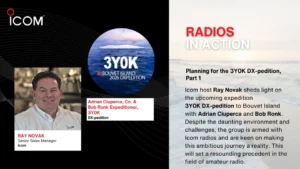Water-Cooled vs. Air-Cooled Equipment: How Should You Stay Cool?
When seeking to cool a large scale commercial or industrial facility, insufficient information often leads to an unsatisfactory solution. While some stakeholders choose water-cooled chillers because they believe the cooling tower in these systems offers more efficiency, others prefer air-based cooling systems because of the less prohibitive upfront price. And with recent technological advances made in both air and water-based chilling systems, determining which option is the right fit has become even more challenging. To decide which system best suits a specific project’s needs, it’s important to understand the pros and cons associated with each option.
Same Basic System
Water-cooled chillers and air-based cooling systems both contain an evaporator, condenser, compressor and expansion valve. Liquid refrigerant flows over the evaporator tube bundle and evaporates, absorbing heat from the chilled water circulating through the bundle. The compressor draws the refrigerant vapor out of the evaporator, then pumps it to the condenser, raising its pressure and temperature. As the refrigerant condenses on or in the condenser tubes, its heat is emitted to the cooling water or air. At this point, the high-pressure liquid refrigerant passes from the condenser through the expansion device, reducing the pressure and temperature as it enters the evaporator, then flows over the chilled coils absorbing more heat and completing the cycle. The difference between air and water-based systems begins at the condensing stage.
Key Differences
A water-based cooling system requires cooling towers, condenser water pumps, reservoirs of cooling fluid, and make-up pumps. While upfront costs for a water-cooled chiller are typically higher, these systems often last longer than air-based coolers, resulting in a lower life-cycle cost, thereby offering increased ROI. The use of water rather than air also translates to a smaller footprint, requiring less space comparatively. However, if access to clean and plentiful water is limited, the water-cooling method becomes too expensive and quite challenging to maintain.
On the other hand, air-based systems use fans to create a moving current of air, requiring no cooling towers or water to operate. This option may preferable for poor quality makeup water or in areas with higher than normal water costs. However, to remove unwanted heat from structures, these systems need access to a lot of fresh air, resulting in more space required to house them.
The Right Option Versus the Right Cost
So what’s the simplest way to determine the best option for a project? It comes down to comparing accessibility and usage with life cycle versus initial cost. If water is in good supply and accessible, and budgets permit a higher initial purchase, efficient, longer-lasting water-based systems provide a lower cost of ownership. If a consistent water supply is unavailable or the initial cost of a water-cooled system seems prohibitive, with less equipment and maintenance required, an air-cooled system may be the better option.
When a water-based cooling system is the right fit, Chem-Aqua has solutions that can reduce associated costs. Chem-Aqua provides custom water treatment solutions to minimize energy, water, and maintenance costs, ensuring critical water-based cooling systems run reliably, efficiently, and safely. To learn how Chem-Aqua can help bring water cooling costs down, contact us today!









